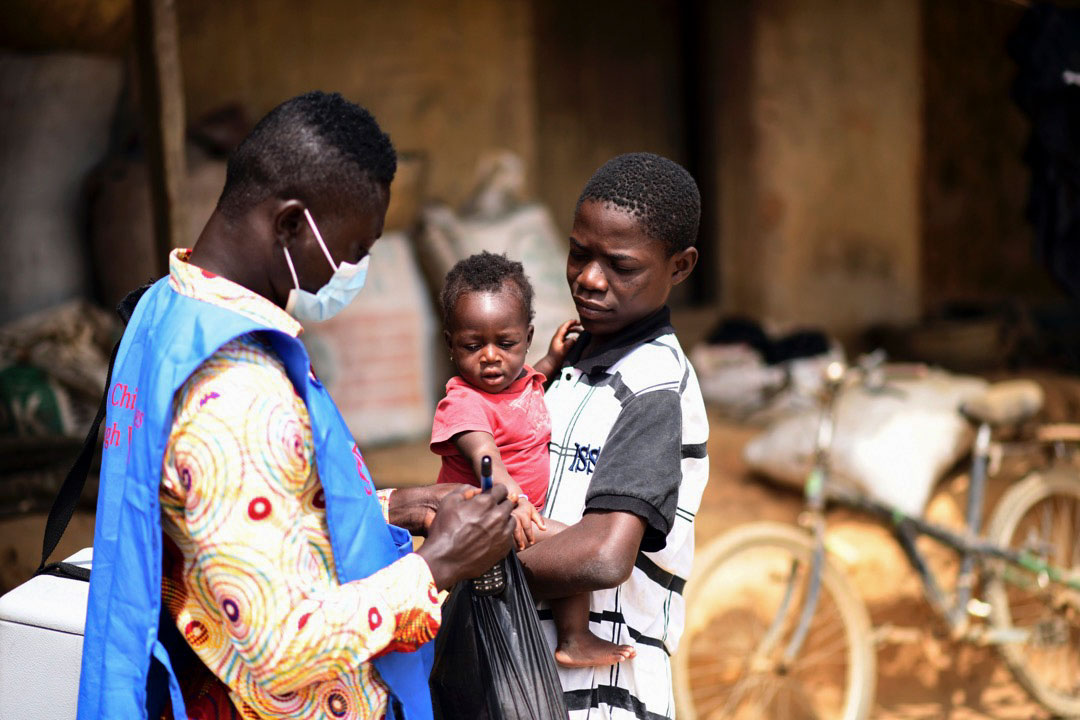-
In the face of a global pandemic, routine and childhood vaccination has held relatively strong, Gavi’s latest Annual Progress Report shows, with routine immunisations dropping 4 percentage points over the course of 2020
-
While lower than 2019, vaccination rates in 2020 were characterised by a significant drop in March to May followed by a strong rebound, which is a testament to the valiant work of governments and health care workers in lower-income countries
-
Latest statistics show there are now 13.7 million “zero-dose” children in the 68 Gavi-supported countries receiving no immunisations, many of whom live in marginalised communities in remote rural areas, urban slums or conflict settings
Geneva, 30 September 2021 – As part of the latest Gavi Annual Progress Report, which outlines the work the Vaccine Alliance has done and how global vaccination progressed over the past five years, new statistics show that routine immunisation programmes have been hit hard by the COVID-19 pandemic. However, the latest data shows that there is extraordinary resilience in immunisation systems, with governments’ efforts to keep childhood vaccinations going despite the impact of the pandemic paying dividends.
In the 68 lower-income countries supported by Gavi, data shows an average 4 percentage-point drop in routine immunisation coverage over the course of 2020, from 82% of children to 78%, for a full course of basic diphtheria, tetanus and pertussis-containing vaccines (DTP3) – the key yardstick used for vaccination coverage worldwide. However, despite this drop in essential coverage that will lead to many preventable deaths, this is significantly better than predictions made last year by the Institute for Health Metrics and Evaluation (IHME) that global vaccine coverage would fall 14 percentage points in 2020.
Where available, monthly administrative data suggests lower-income countries saw a significant shock to immunisation programmes in the first months of the pandemic. Routine vaccine activity dropped by 40% in April 2020. However despite major disruptions in spring, much of this was offset by early gains prior to the pandemic and a strong recovery: by December 2020 monthly immunisation rates exceeded those of December 2019.
“COVID-19 represented a major challenge to childhood vaccination – with parents afraid to venture out to clinics and health care system capacity stretched to deal with a major influx of patients,” Dr Seth Berkley, Gavi CEO, underlined. “That Gavi countries saw such continuing strength in their vaccination systems is testament to an unprecedented effort from governments, Gavi, WHO, UNICEF and other Vaccine Alliance partners to shelter immunisation programmes from the worst effects of the pandemic.”
"A good immunisation programme is crucial to the health and wellbeing of our children,” said Dr Faisal Sultan, Pakistan’s Special Assistant to the Prime Minister on National Health Services, Regulations & Coordination. “We've had a number of different waves and surges of COVID-19 but we’ve learned to work through these waves and not get impacted in terms of immunisation coverage. Continuing with effective and far reaching immunisation of children against deadly diseases is crucial; the impact of routine immunisation is long lasting and is for diseases that are not only deadly, but come at different times and different timescales.”
“From Afghanistan to Zimbabwe, heroic health workers have been braving the pandemic,” Gavi Deputy CEO Anuradha Gupta said. “By adapting their work to new public health guidelines and building the confidence of caregivers to continue vaccinating children against preventable diseases, they have significantly reduced the chances of measles or polio outbreaks taking hold. This discipline and fortitude gives us confidence that we will be able to reach more of the most hard-to-reach children in years to come.”
Meanwhile, early reporting of monthly data from the first half of 2021 suggests that disruptions have been less severe than the same period in 2020, though Asia continues to see a larger impact on routine immunisation than other regions, such as Africa.
MEDIA CONTACTS
Evan O’Connell
+41 79 682 18 95
eoconnell@gavi.org
Laura Shevlin
+ 41 79 529 92 87
lshevlin@gavi.org
Meg Sharafudeen
+41 79 711 55 54
msharafudeen@gavi.org
Iryna Mazur
+41 79 429 3671
imazur@gavi.org
Cirũ Kariũki
+41 79 913 94 41
ckariuki@gavi.org
Disparities remain however, with significant variation within and between regions. Over the year, 28 Gavi-supported countries saw coverage remain static or even increase; for example, Ethiopia (+3pp) and Cameroon (+2pp) saw increases in DTP3 coverage in 2020; however, Azerbaijan, Djibouti and Mauritania all saw decreases in immunisation rates of 10 percentage points or more in 2020.
Overall, data suggest that Asia and Latin America both saw the biggest negative impact on routine immunisation programmes, whereas African countries saw very limited disruption and were able to maintain immunisation rates comparable to 2019. This pattern continues into 2021.
With the COVID-19 pandemic still ongoing, this is no time to lessen our resolve to ensure no child misses out on life-saving immunisation. Despite evidence of vaccine coverage recovering, the number of zero-dose children not reached with basic vaccines increased by 3.1 million in the 68 Gavi-supported lower-income countries in 2020, from 10.6 million to 13.7 million children. We need a global movement to reach the communities missed by immunisation.
“Childhood vaccination does not just save lives,” stressed Gavi Board Chair José Manuel Barroso. “It also means people live longer, healthier, happier and more productive lives, with an estimated US$ 54 in broader societal benefits for every dollar spent on vaccination. If we can continue to catch up on missed vaccinations through COVID-19 and reach zero-dose children through new partnerships and innovative approaches, the world will be a better place.”
All figures were drawn from a Gavi analysis of the WHO/UNICEF Estimates of National Immunisation Coverage (WUENIC) or monthly administrative data reported to WHO by countries.

